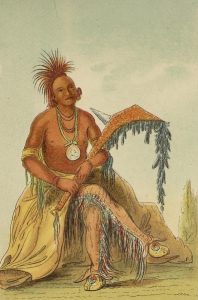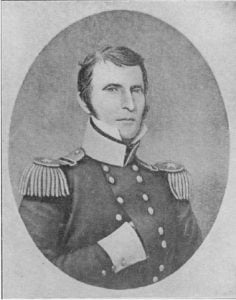Western Garrison Life
Grant Foreman describes the early life in a Western Garrison; providing insights on some of the traders in the region, the deaths of Seaton, Armstrong, Wheelock and Izard, all soldiers obviously familiar to him. But he also shares the story of the elopement of Miss Sarah Knox Taylor, daughter of General Taylor, to Lieutenant Jefferson Davis… yes, THAT Jefferson Davis.
An interesting section of the chapter are the references to the punishments inflicted upon the soldiers in the event of their disobedience.
Painted by Catlin in 1834, the picture attached is of Clermont, chief of the Osage Tribe. Clermont is painted in full length, wearing a fanciful dress, his leggings fringed with scalp-locks, and in his hand his favorite and valued war-club.







